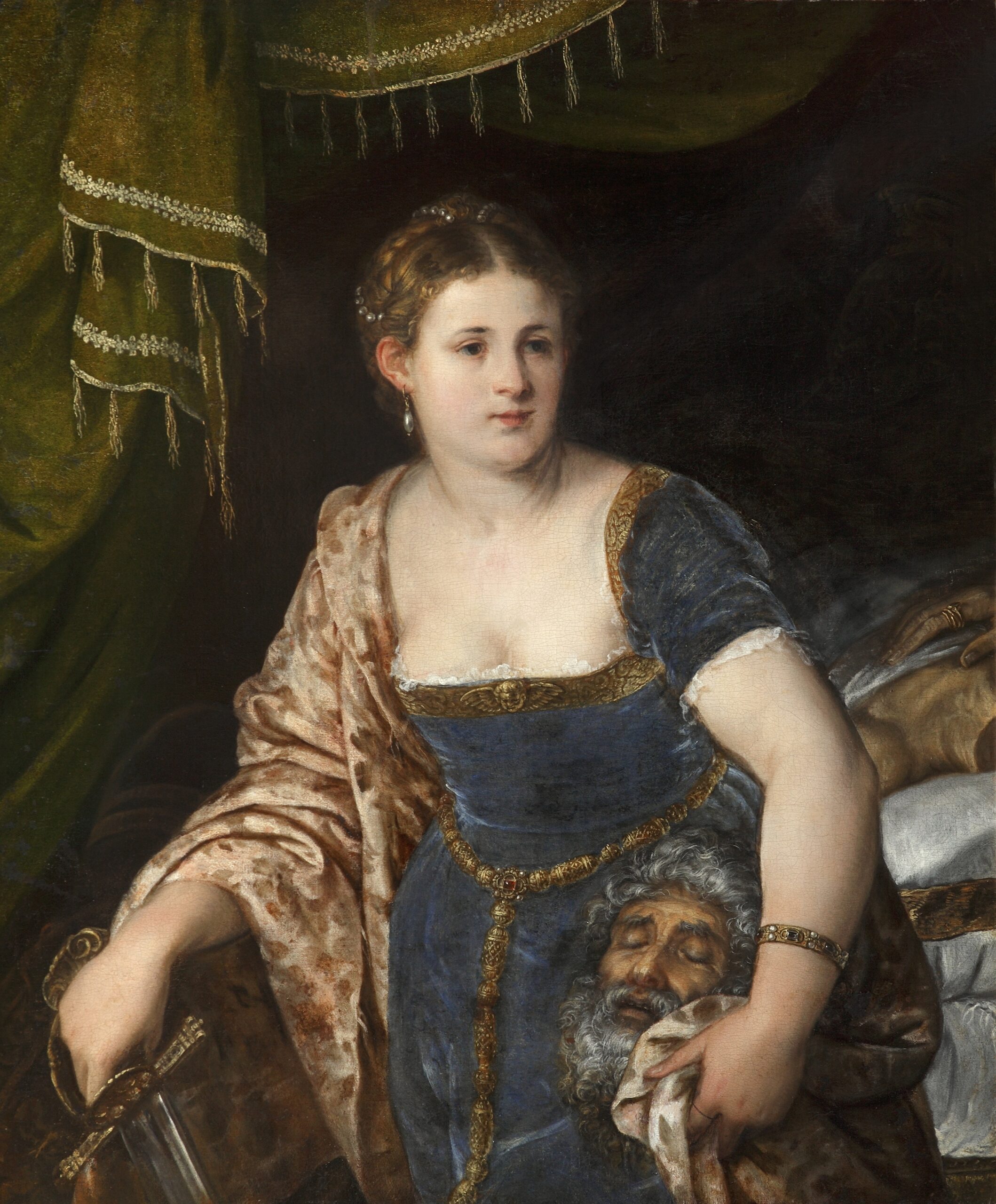Click/Tap the image to see the enlargement
Description
After initial training in Amsterdam, Lambert Sustris, some time in the early to mid-1530s, moved to Italy, where he is documented initially in Rome. He was probably in Venice by c.1535, working in the studio of Titian (c.1488/90-1576).
By the end of the decade he was one of the leading exponents of Mannerism in the Veneto. This painting belongs to a small group of pictures assigned to the period 1548-52, when the artist was in Swabia, much of the time with Titian. These include the Reclining Venus in the Rijksmuseum, Amsterdam, the ‘Noli me tangere‘ in the Musee des Beaux-Arts, Lille, and the Mars, Venus and Cupid in the Louvre, Paris.
The style and composition of Sustris’s paintings, even at this relatively mature point in his career, are still fundamentally dependent on works by Titian, as is evident from a comparison between the Amsterdam Venus and Titian’s famous Venus of Urbino (mid- to late 1530s; Uffizi, Florence). Sustris must have seen the Venus of Urbino before it was shipped in 1538 from Venice to the patron, Guidobaldo II della Rovere (1514-74), Duke of Urbino, and it has even been suggested that he collaborated with Titian on that picture, painting the room in the right background. Yet, as Stefania Mason Rinaldi observed, ‘[Sustris’s] use of colour is different from Titian’s: [he] defines areas with clear outlines and enhances his fine tonal range and sensitive draughtsmanship with silvery highlights’. These diversities have been attributed to the probable influence of his fellow Titian pupil Paris Bordone (1500-71). Sustris’s artistic formation, under the auspices of both Titian and Bordone, is indeed reflected in the previous attribution history of this painting – published as by ‘Titian’ in 1841 and exhibited as ‘attributed to Paris Bordone’ in 1981. The refined chromatic range of the Cobbe picture – complete with the silver-toned highlights is entirely characteristic of Sustris and most closely resembles the palette of his Amsterdam Venus, where a similar olive green curtain, edged with gold brocade trim and tassels, is knotted up at the top left. Not only are the two pictures close in colouring, style and date, they also share the same model and many of the same stage props. The young woman who posed for both works has widely set blue grey eyes, pinched rosebud lips and the same protruding ears. Her hair is arranged in the same fashion, with a central parting and plaits wound on top of her head (with strings of pearls in the Cobbe painting). She is wearing the same jewel-encrusted gold bracelet in both compositions, and behind her is the same bed, with a large cushion or pillow trimmed in gold brocade.
